Abstract
Soleus H-reflexes were recorded in 10 normal subjects and seven patients with spasticity caused by incomplete spinal cord injury while they pedalled on a stationary bicycle which had been modified to trigger electrical stimuli to the tibial nerve at eight precise points in the pedal cycle. Stimulus strength was adjusted to yield M-waves of constant amplitude at each pedal position. During active pedalling, all normal subjects showed modulation of the H-reflex with the amplitude being increased during the downstroke portion of the pedal cycle and the reflex suppressed or absent during the upstroke. This modulation was not present during passive pedalling, with the experimenter cranking the pedals by hand, or when the pedals were locked at each of the eight positions. In five of the seven patients with spasticity, there was reduced or absent modulation of the H-reflex during active pedalling and the reflex remained large during pedal upstroke. It is concluded that descending motor commands that produce patterned voluntary activity during pedalling normally cause cyclical gating of spinal reflexes by either presynaptic or postsynaptic inhibitory mechanisms. Loss of supraspinal control over these spinal inhibitory systems could result in failure to produce appropriate suppression of reflexes during patterned voluntary movements such as pedalling or walking, and may be an important factor contributing to the functional disability in spasticity.
Full text
PDF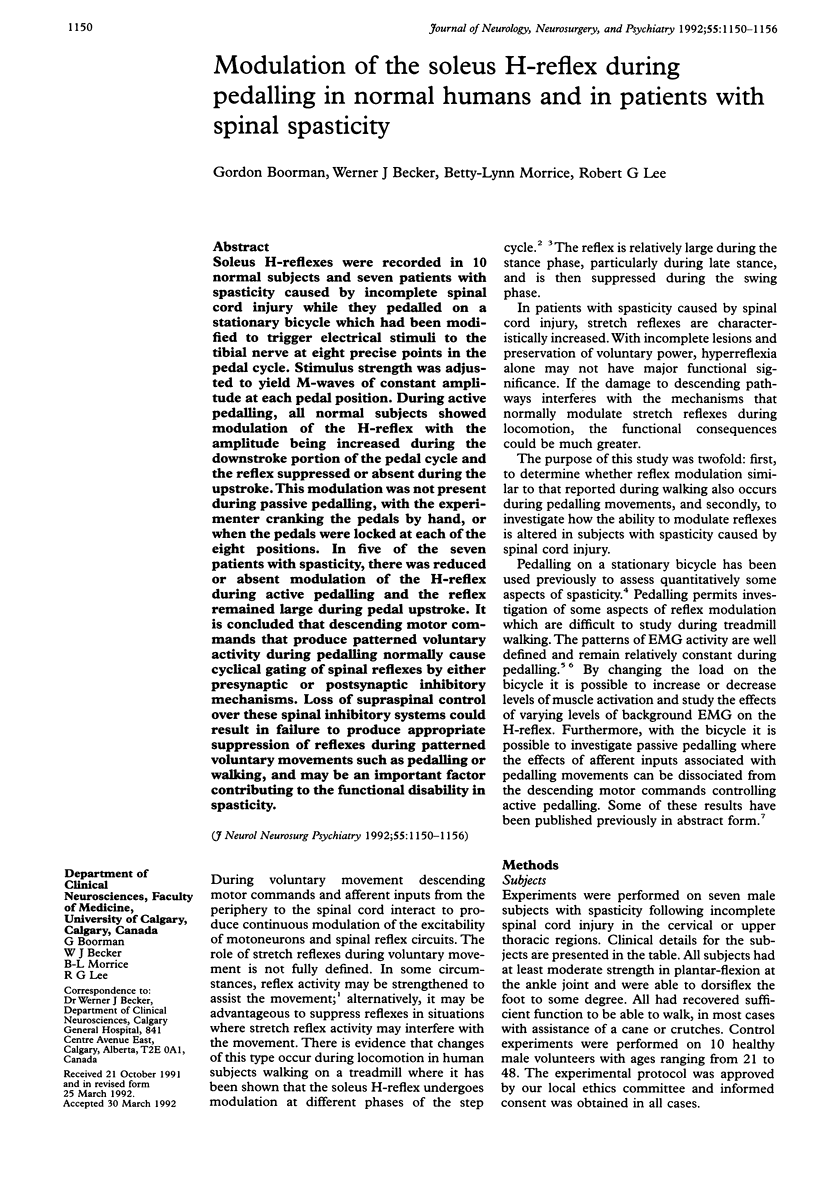
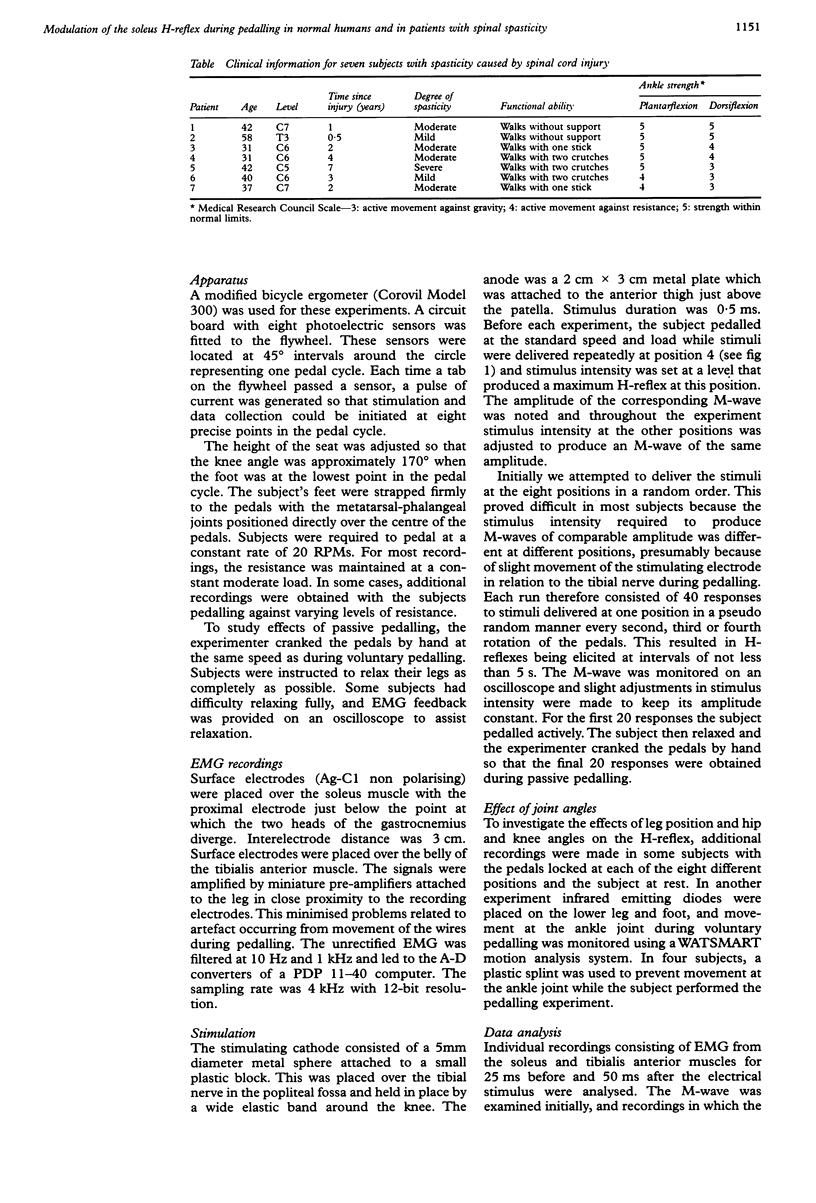
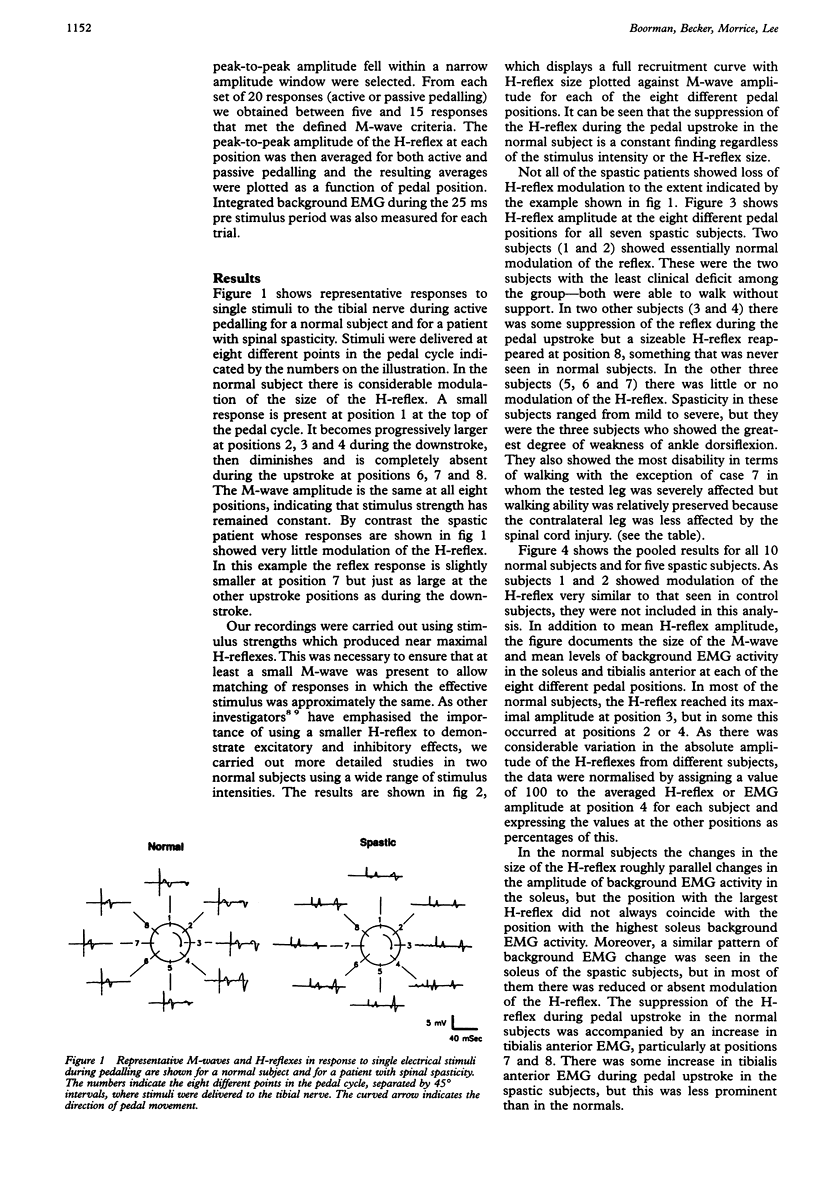
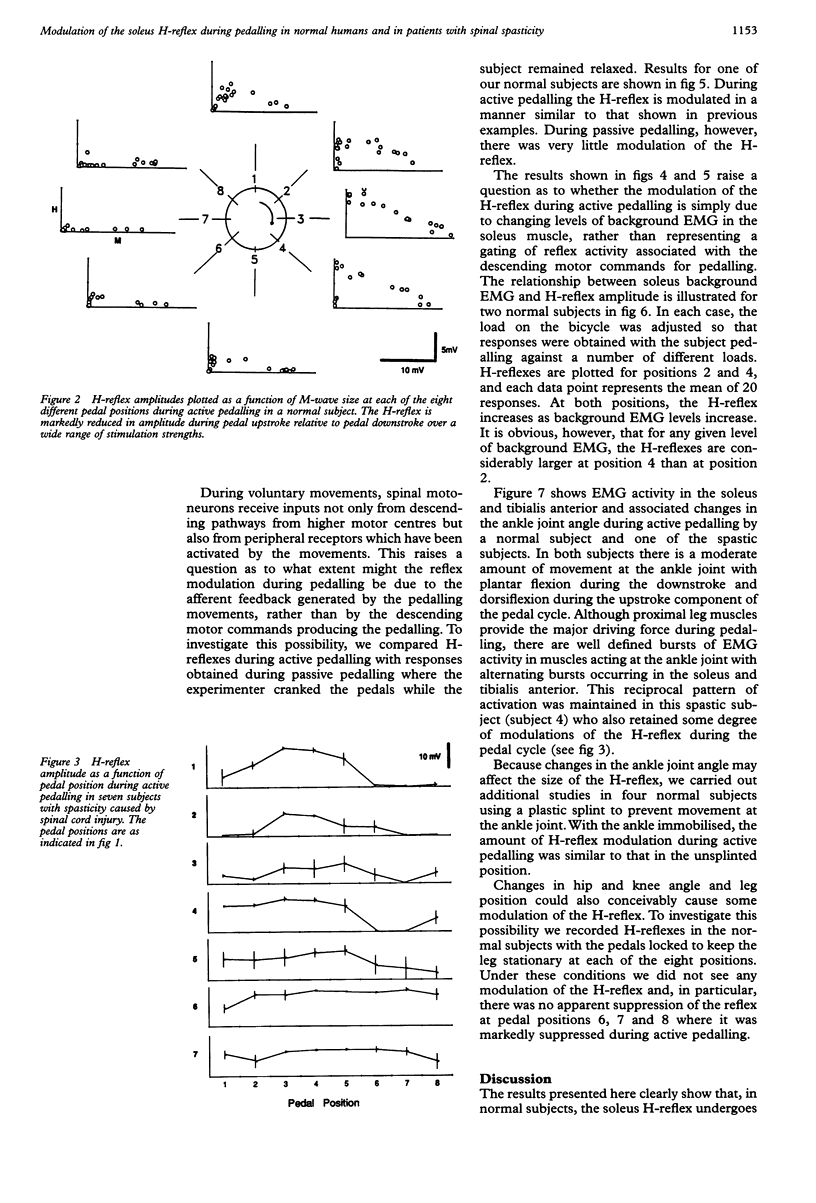
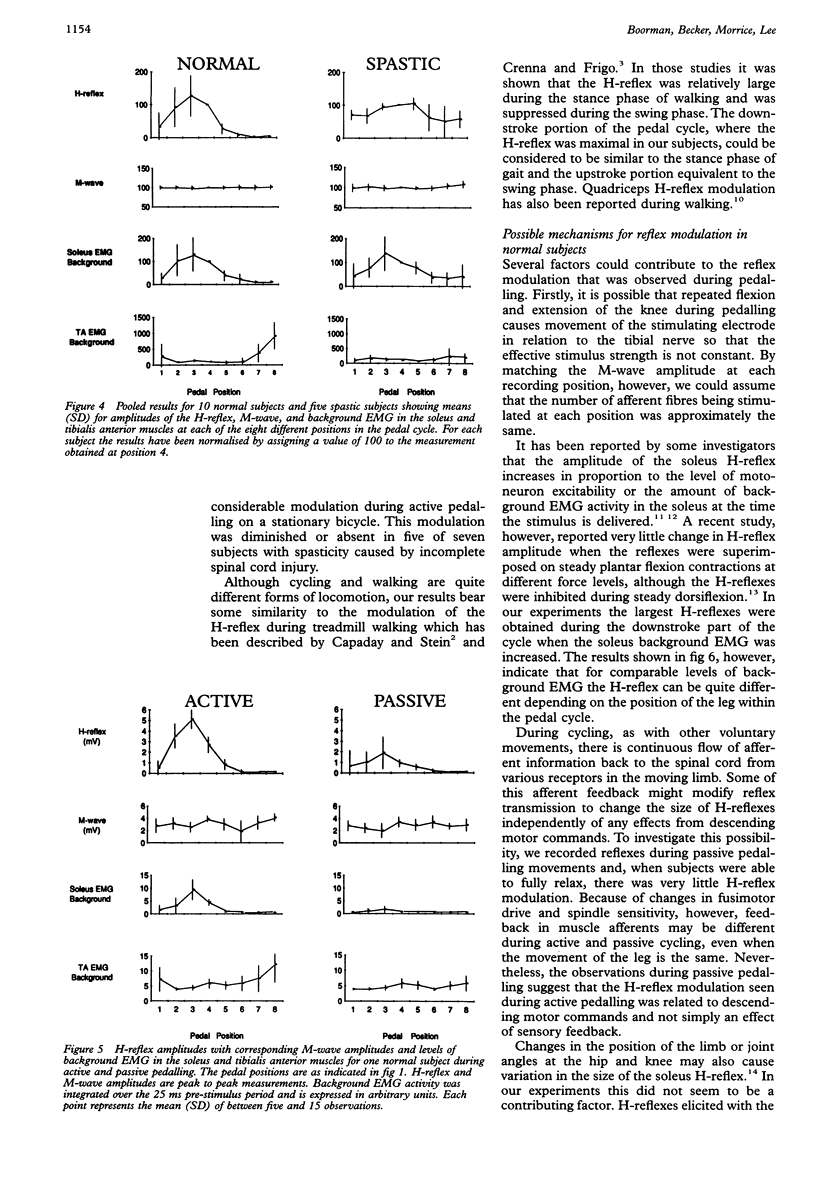
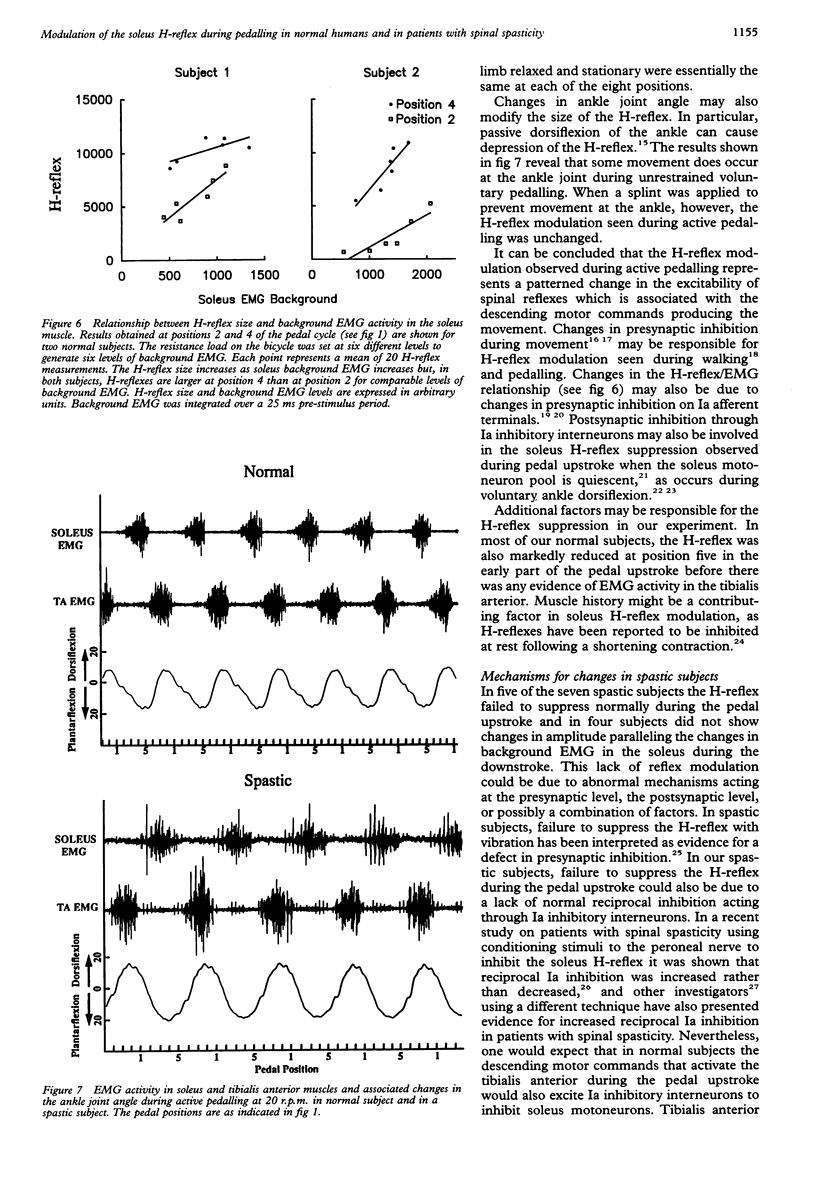
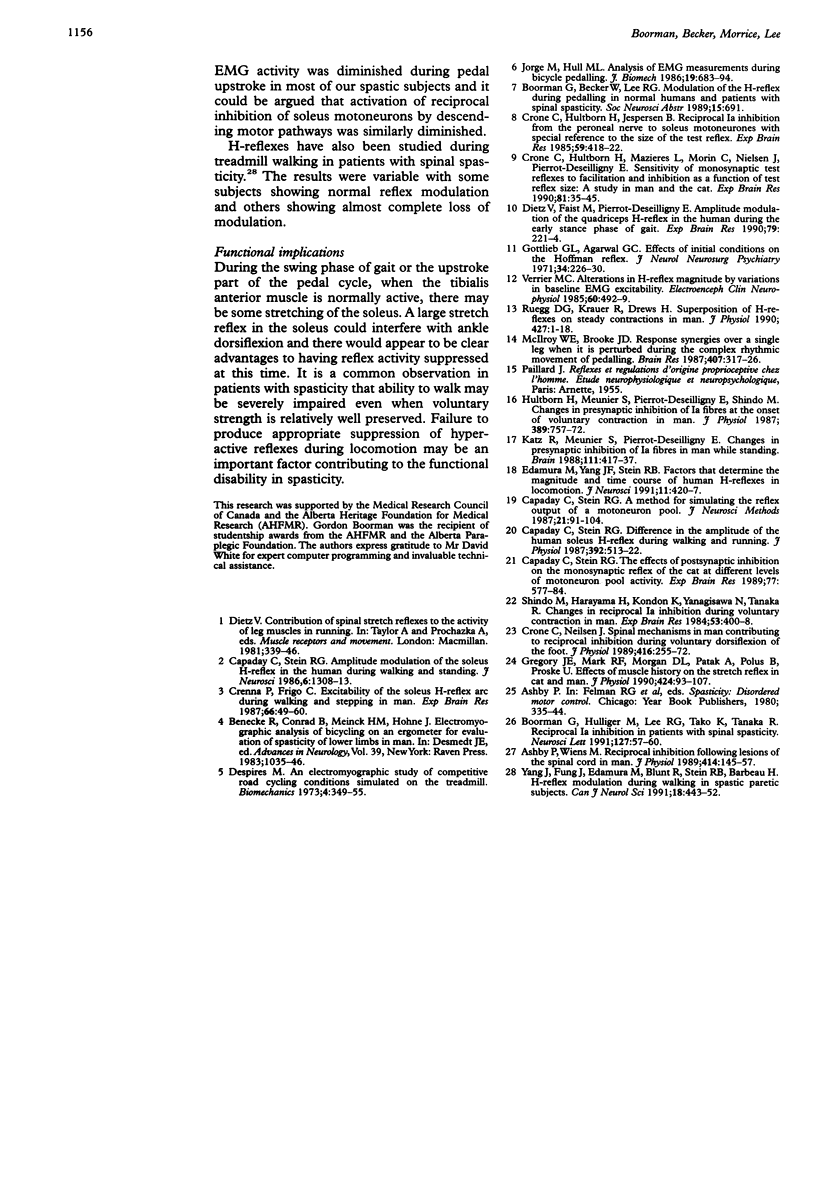
Selected References
These references are in PubMed. This may not be the complete list of references from this article.
- Ashby P., Wiens M. Reciprocal inhibition following lesions of the spinal cord in man. J Physiol. 1989 Jul;414:145–157. doi: 10.1113/jphysiol.1989.sp017681. [DOI] [PMC free article] [PubMed] [Google Scholar]
- Benecke R., Conrad B., Meinck H. M., Höhne J. Electromyographic analysis of bicycling on an ergometer for evaluation of spasticity of lower limbs in man. Adv Neurol. 1983;39:1035–1046. [PubMed] [Google Scholar]
- Boorman G., Hulliger M., Lee R. G., Tako K., Tanaka R. Reciprocal Ia inhibition in patients with spinal spasticity. Neurosci Lett. 1991 Jun 10;127(1):57–60. doi: 10.1016/0304-3940(91)90894-y. [DOI] [PubMed] [Google Scholar]
- Capaday C., Stein R. B. Amplitude modulation of the soleus H-reflex in the human during walking and standing. J Neurosci. 1986 May;6(5):1308–1313. doi: 10.1523/JNEUROSCI.06-05-01308.1986. [DOI] [PMC free article] [PubMed] [Google Scholar]
- Capaday C., Stein R. B. Difference in the amplitude of the human soleus H reflex during walking and running. J Physiol. 1987 Nov;392:513–522. doi: 10.1113/jphysiol.1987.sp016794. [DOI] [PMC free article] [PubMed] [Google Scholar]
- Capaday C., Stein R. B. The effects of postsynaptic inhibition on the monosynaptic reflex of the cat at different levels of motoneuron pool activity. Exp Brain Res. 1989;77(3):577–584. doi: 10.1007/BF00249610. [DOI] [PubMed] [Google Scholar]
- Crenna P., Frigo C. Excitability of the soleus H-reflex arc during walking and stepping in man. Exp Brain Res. 1987;66(1):49–60. doi: 10.1007/BF00236201. [DOI] [PubMed] [Google Scholar]
- Crone C., Hultborn H., Jespersen B. Reciprocal Ia inhibition from the peroneal nerve to soleus motoneurones with special reference to the size of the test reflex. Exp Brain Res. 1985;59(2):418–422. doi: 10.1007/BF00230924. [DOI] [PubMed] [Google Scholar]
- Crone C., Hultborn H., Mazières L., Morin C., Nielsen J., Pierrot-Deseilligny E. Sensitivity of monosynaptic test reflexes to facilitation and inhibition as a function of the test reflex size: a study in man and the cat. Exp Brain Res. 1990;81(1):35–45. doi: 10.1007/BF00230098. [DOI] [PubMed] [Google Scholar]
- Crone C., Nielsen J. Spinal mechanisms in man contributing to reciprocal inhibition during voluntary dorsiflexion of the foot. J Physiol. 1989 Sep;416:255–272. doi: 10.1113/jphysiol.1989.sp017759. [DOI] [PMC free article] [PubMed] [Google Scholar]
- Dietz V., Faist M., Pierrot-Deseilligny E. Amplitude modulation of the quadriceps H-reflex in the human during the early stance phase of gait. Exp Brain Res. 1990;79(1):221–224. doi: 10.1007/BF00228893. [DOI] [PubMed] [Google Scholar]
- Gregory J. E., Mark R. F., Morgan D. L., Patak A., Polus B., Proske U. Effects of muscle history on the stretch reflex in cat and man. J Physiol. 1990 May;424:93–107. doi: 10.1113/jphysiol.1990.sp018057. [DOI] [PMC free article] [PubMed] [Google Scholar]
- Hultborn H., Meunier S., Pierrot-Deseilligny E., Shindo M. Changes in presynaptic inhibition of Ia fibres at the onset of voluntary contraction in man. J Physiol. 1987 Aug;389:757–772. doi: 10.1113/jphysiol.1987.sp016681. [DOI] [PMC free article] [PubMed] [Google Scholar]
- Jorge M., Hull M. L. Analysis of EMG measurements during bicycle pedalling. J Biomech. 1986;19(9):683–694. doi: 10.1016/0021-9290(86)90192-2. [DOI] [PubMed] [Google Scholar]
- Katz R., Meunier S., Pierrot-Deseilligny E. Changes in presynaptic inhibition of Ia fibres in man while standing. Brain. 1988 Apr;111(Pt 2):417–437. doi: 10.1093/brain/111.2.417. [DOI] [PubMed] [Google Scholar]
- McIlroy W. E., Brooke J. D. Response synergies over a single leg when it is perturbed during the complex rhythmic movement of pedalling. Brain Res. 1987 Mar 31;407(2):317–326. doi: 10.1016/0006-8993(87)91110-3. [DOI] [PubMed] [Google Scholar]
- Rüegg D. G., Krauer R., Drews H. Superposition of H reflexes on steady contractions in man. J Physiol. 1990 Aug;427:1–18. doi: 10.1113/jphysiol.1990.sp018157. [DOI] [PMC free article] [PubMed] [Google Scholar]
- Shindo M., Harayama H., Kondo K., Yanagisawa N., Tanaka R. Changes in reciprocal Ia inhibition during voluntary contraction in man. Exp Brain Res. 1984;53(2):400–408. doi: 10.1007/BF00238170. [DOI] [PubMed] [Google Scholar]
- Verrier M. C. Alterations in H reflex magnitude by variations in baseline EMG excitability. Electroencephalogr Clin Neurophysiol. 1985 Jun;60(6):492–499. doi: 10.1016/0013-4694(85)91109-5. [DOI] [PubMed] [Google Scholar]


